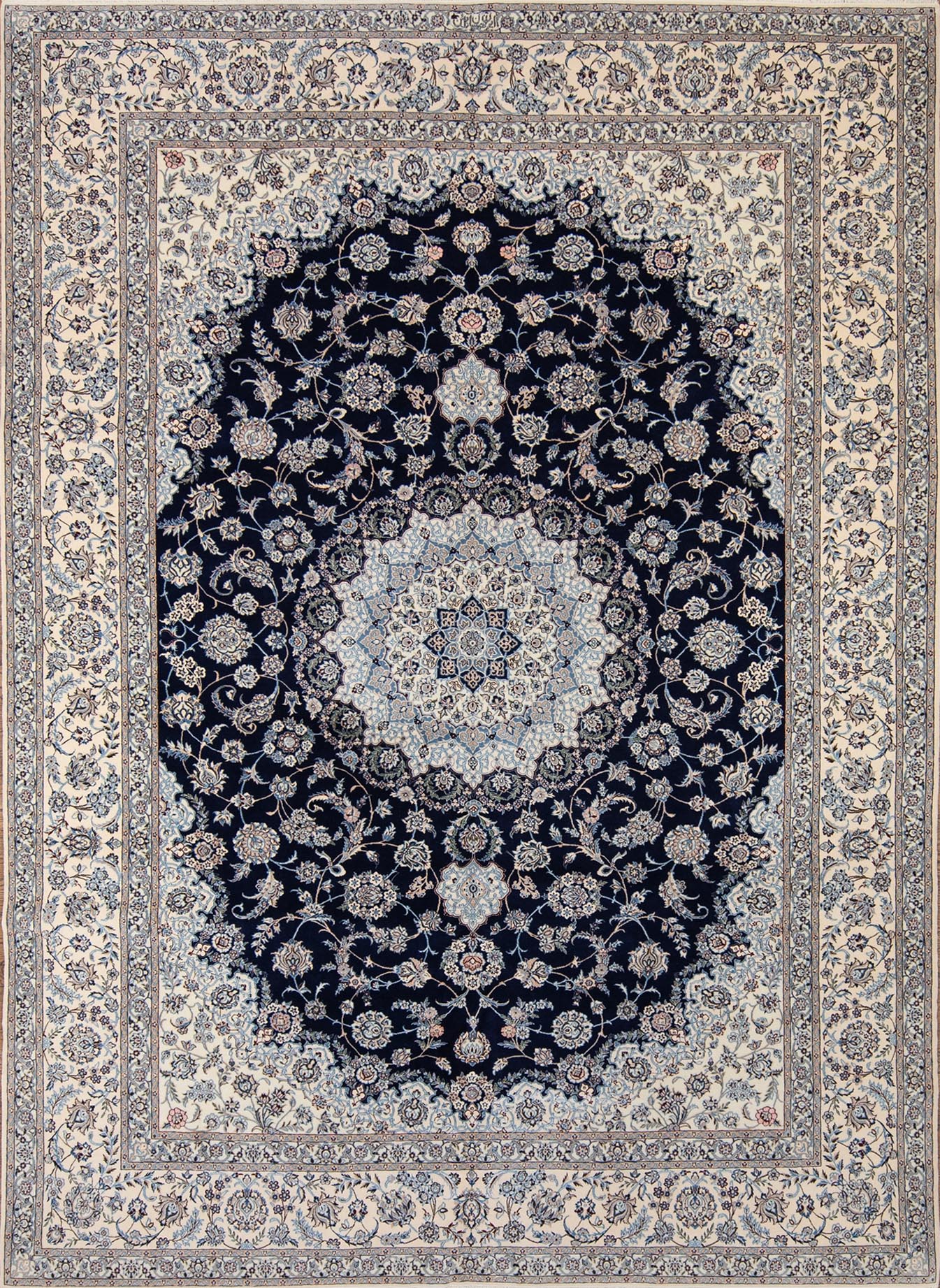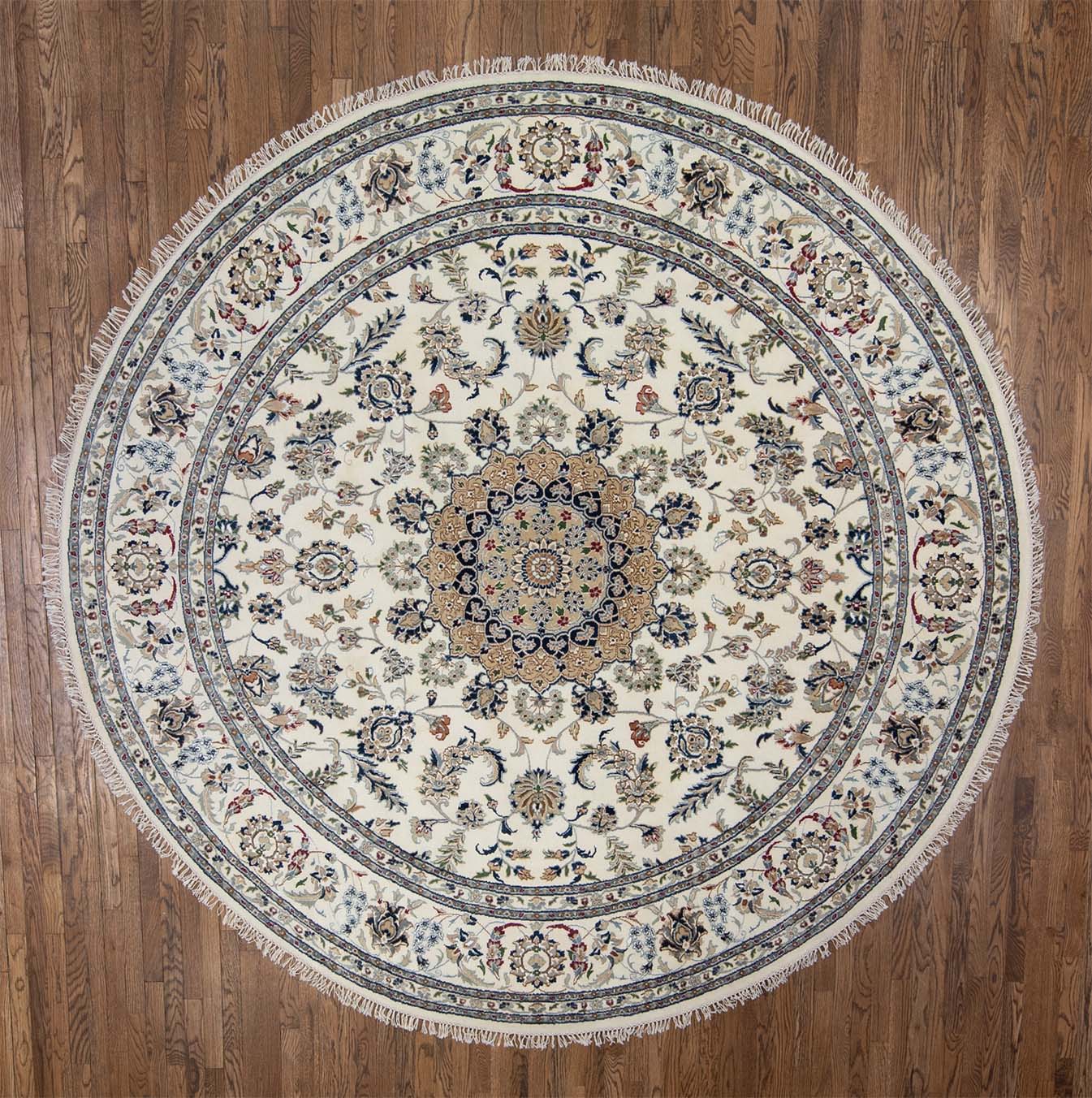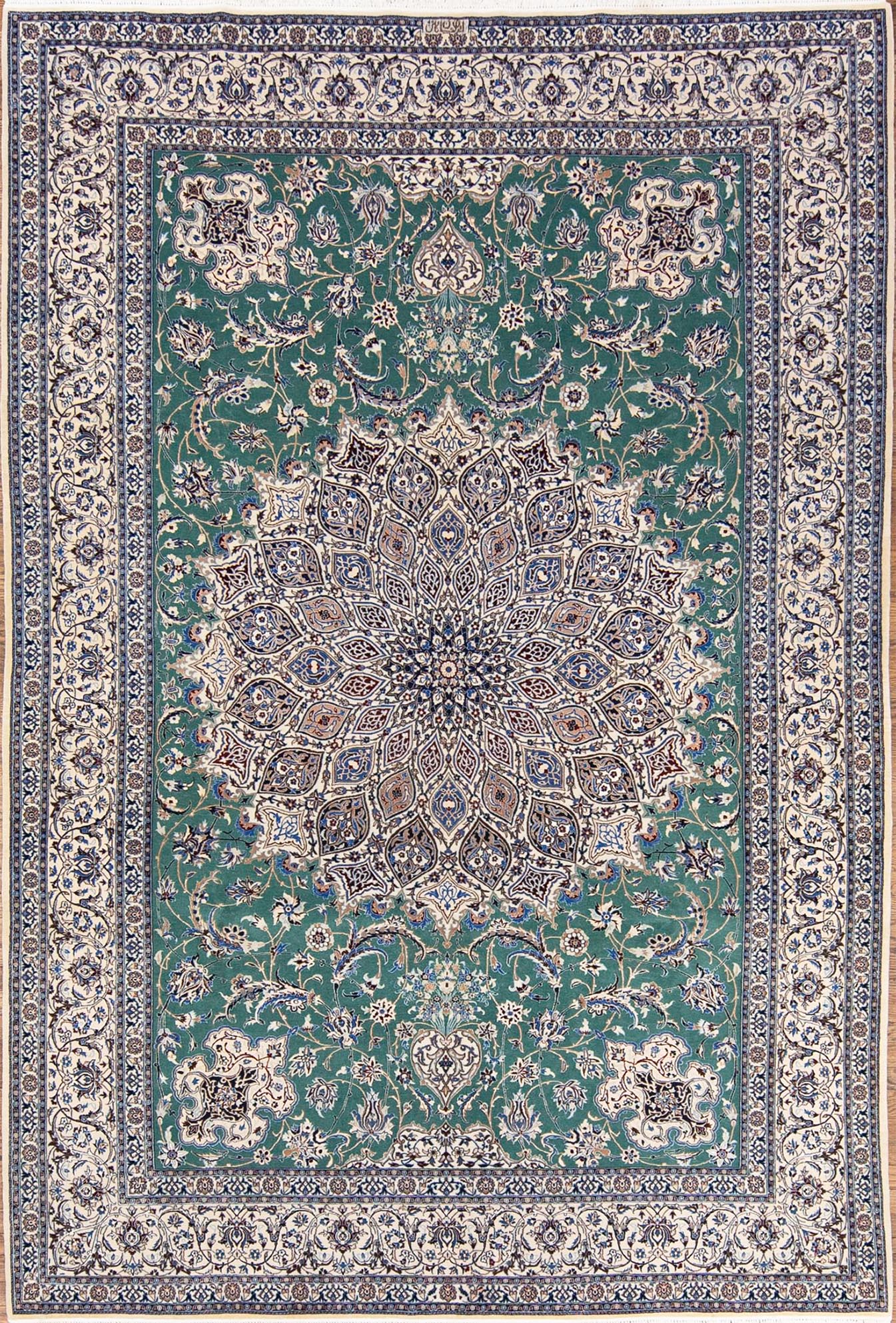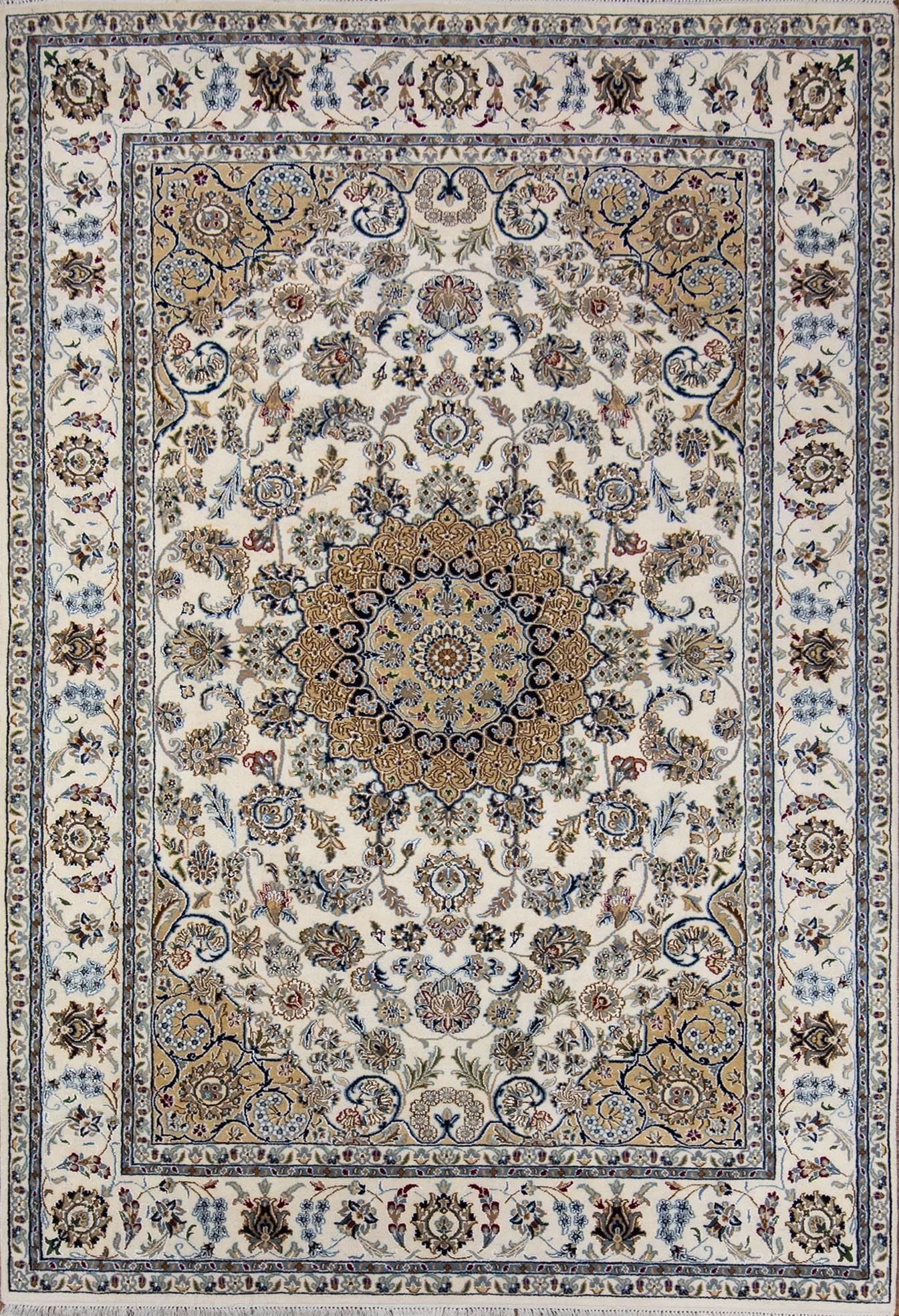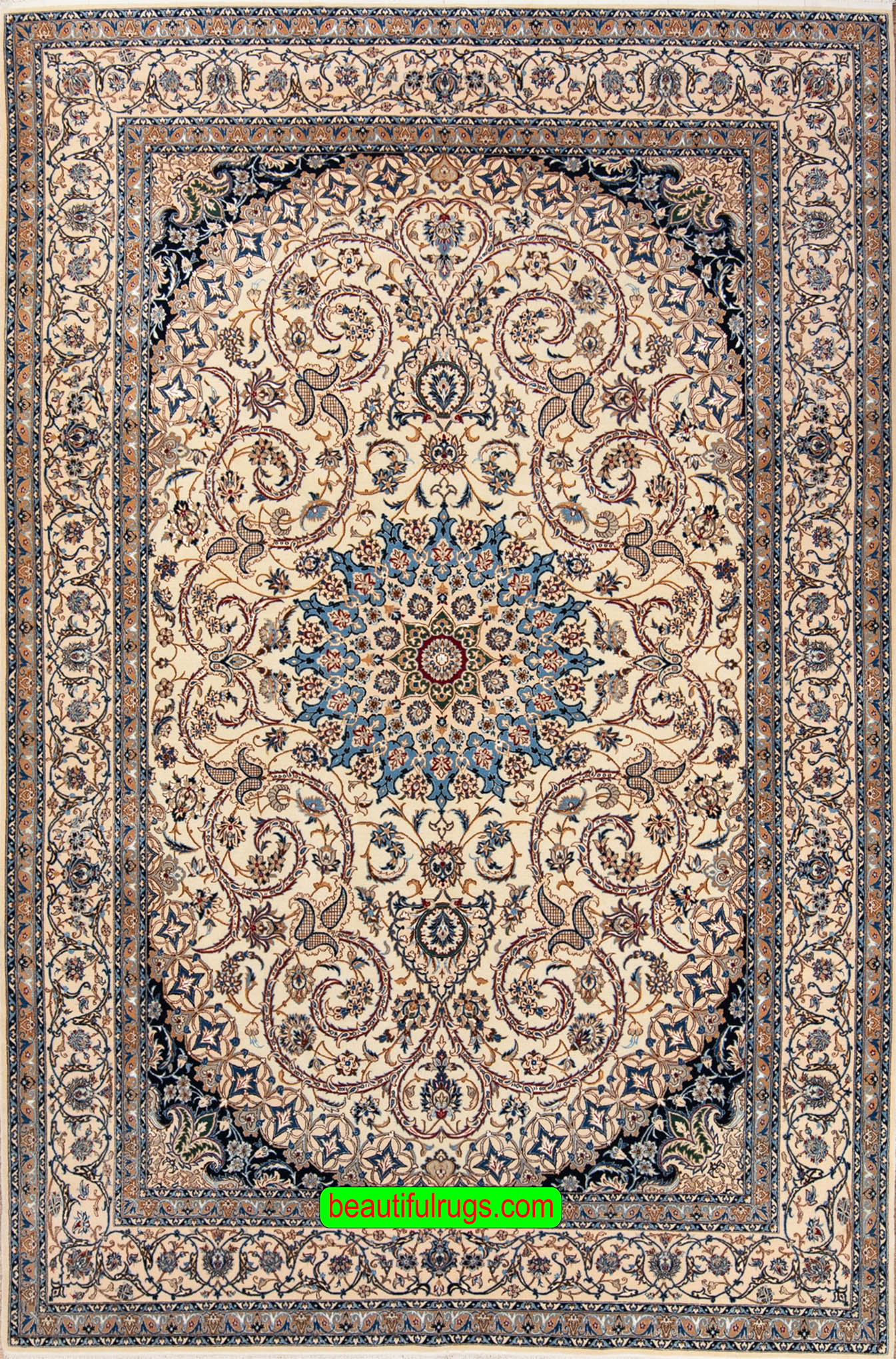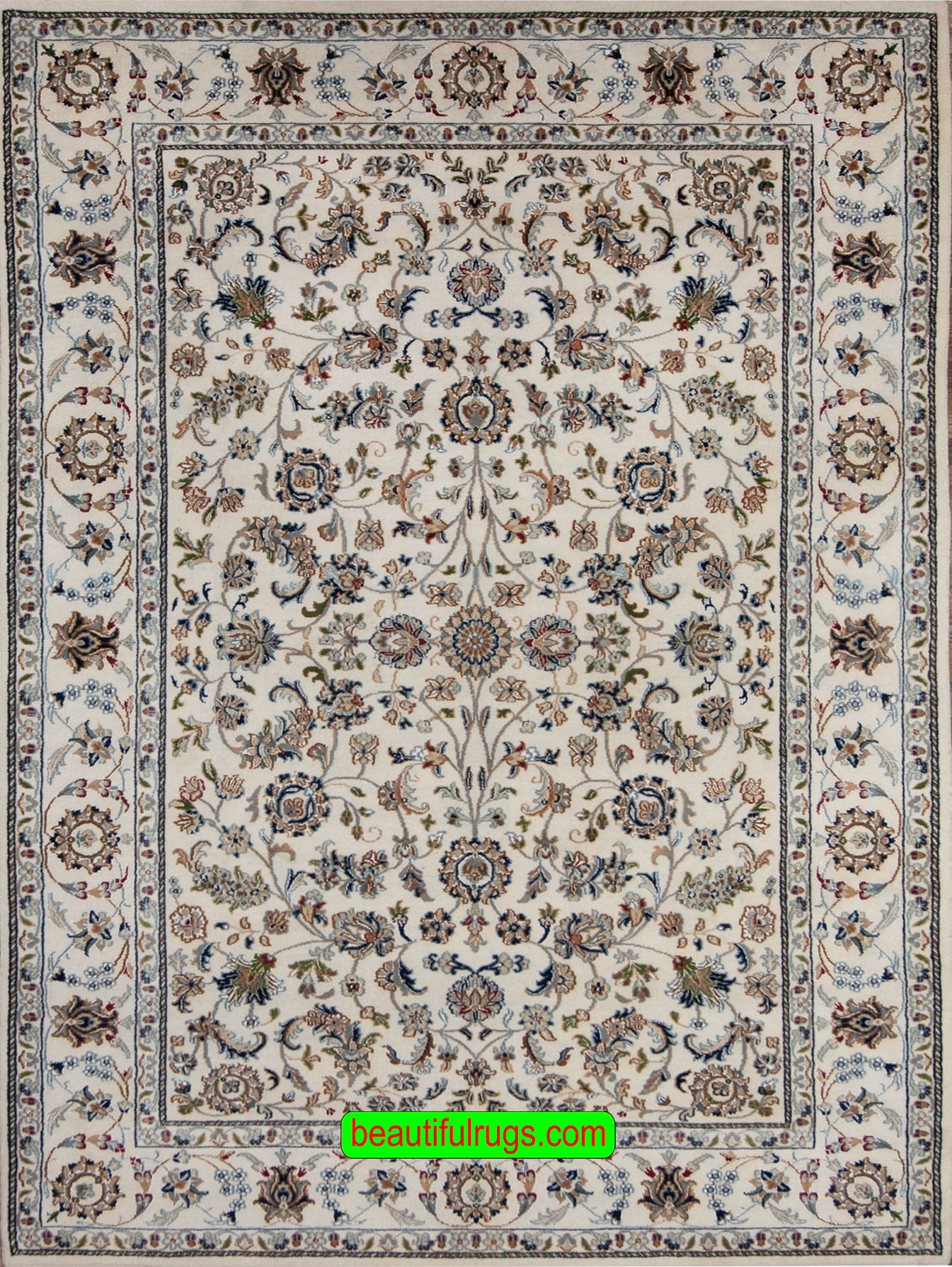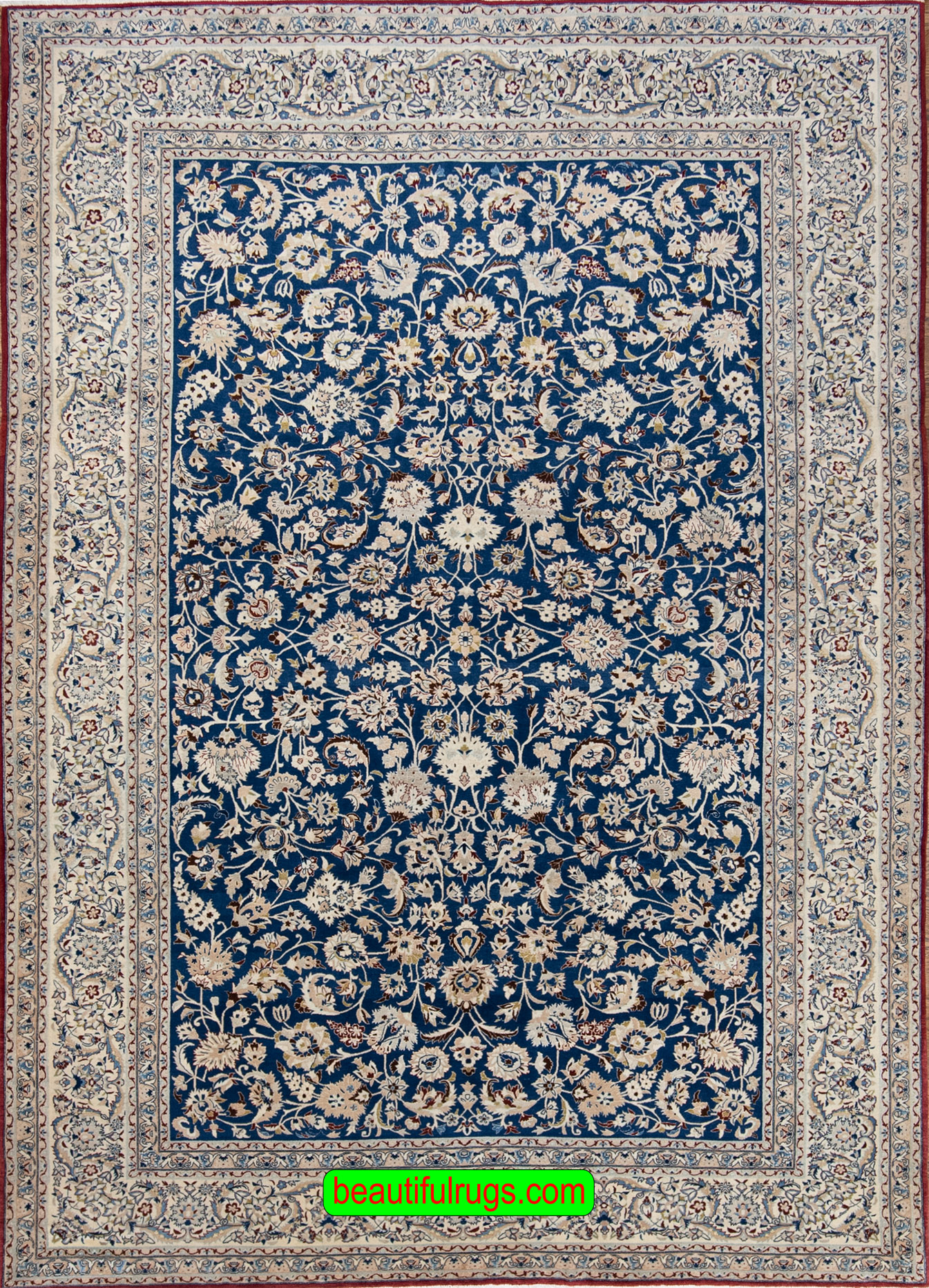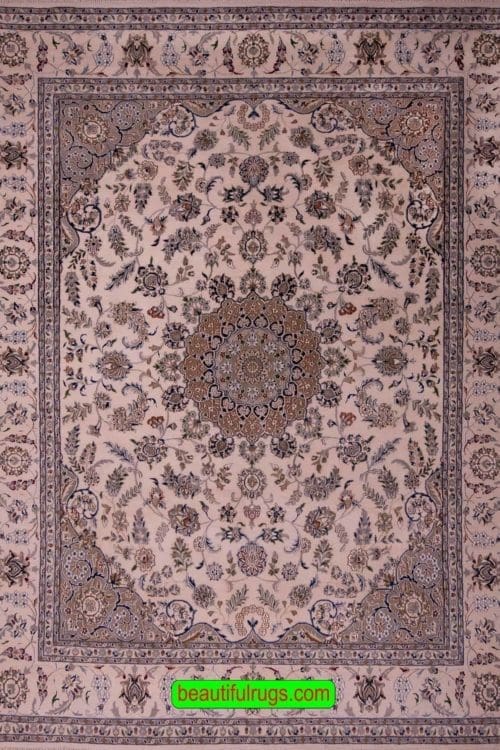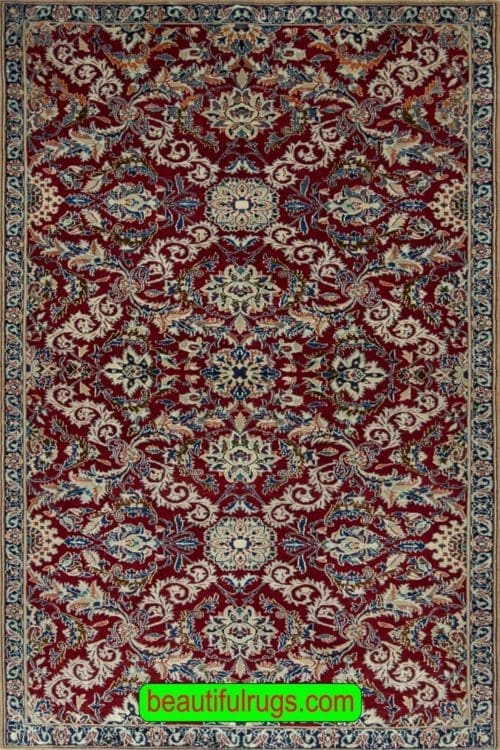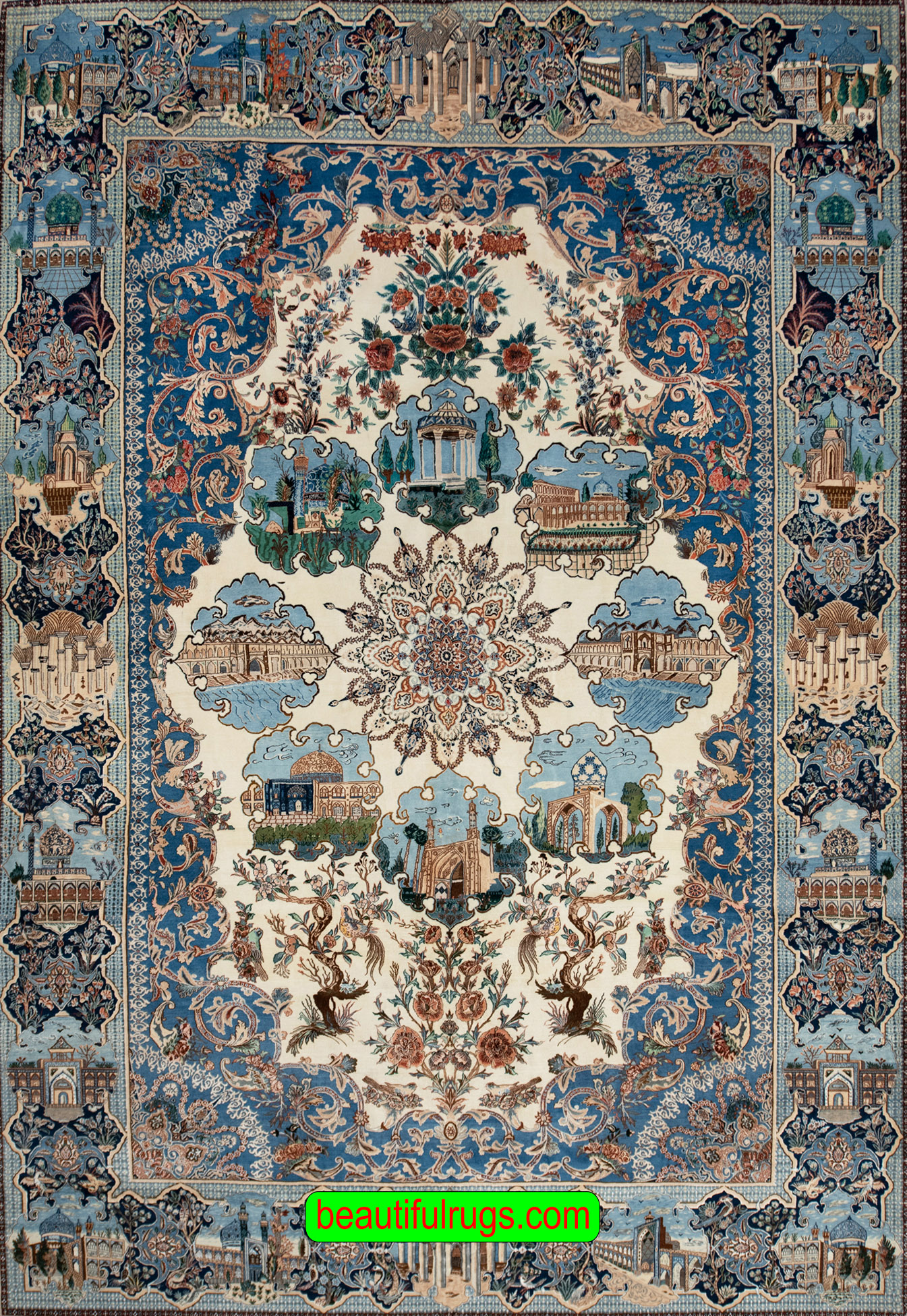Nain Rugs, Persian Nain Rug
The city of Nain in Isfahan province is located in central Iran on a desert plateau and is known for its older distinctive clay buildings. Large-scale rug production began in this city only in the 20th century; prior to that, Nain was known for its woolen cloth production. Initially, Nain rugs resembled those of the neighboring city of Isfahan, but these rugs soon began to develop a somewhat different and distinctive style.

It often features the Shah Abbas design with arabesques (a design motif of intertwined flowing lines that represent vines, branches, or tendrils that includes flower buds, blossoms, and leaves), palmettes (a motif of a stylized lotus flower with radiating petals, which has many variations on its design); a central medallion with very refined, intricate curvilinear floral patterns that are brown or gray on a cream or ivory field, or red and blue are used for patterns or the field. White silk is often used to highlight details, and some Nain rugs are even entirely woven of silk. Reliance on white wool is characteristic of these rugs, and a limit may be placed on the number of colors used so the rugs make a calm and relaxed impression. Twentieth-century Iranian weavers and designers of this region’s handmade rugs are Habiban and Mofidi.
Nain rugs are based on the Safavid design, which is named after the Safavid dynasty (1502-1722). Safavid rulers established rug workshops and factories, as well as schools, which allowed the handmade Persian rug to attain its peak of sophisticated and complex, intricate design, which achieved renown as an export to Europe, India, and Turkey.
Showing all 15 results
STYLES
-

Persian Navy Blue Rug, 8x11 Persian Nain Rug
Read more- Sale!

Red Persian Rug, 7x8 Persian Nain Rug
Original Price:
Sale Price: $10,500.00Save: $5,230.00 (33.2%)
Read more- Sale!

Round Rugs for Living Room, Handmade 9x9 Round Rug
Original Price:
Sale Price: $3,632.00Save: $404.00 (10%)
Read more- Sale!

9 FT Round Rug, Handmade 9 Foot Round Blue Rug
Original Price:
Sale Price: $3,697.00Save: $411.00 (10%)
Read more- Sale!

Persian Nain Rug, Hand Knotted Persian Nain Habibian Rug with 625 KPSI
Original Price:
Sale Price: $9,980.00Save: $4,920.00 (33%)
Read more- Sale!

Oriental Rug Chicago, Floral Wool Oriental Rug for Dining Room
Original Price:
Sale Price: $1,999.00Save: $709.00 (26.2%)
Read more- Sale!

Nain Persian Rug, 7x10 Beige Persian Nain Rug
Original Price:
Sale Price: $13,440.00Save: $3,360.00 (20%)
Read more- Sale!

Oriental Area Rug for Living Room, Beige Color Soft Wool Area Rug
Original Price:
Sale Price: $1,999.00Save: $689.00 (25.6%)
Read more- Sale!

Beige Rug, Persian Rug, Handmade Persian Nain Wool and Silk Rug
Original Price:
Sale Price: $1,770.00Save: $1,210.00 (40.6%)
Read more- Sale!

Nain Rug, Cream Colored Rug, Persian Nain Wool and Silk Rug
Original Price:
Sale Price: $1,900.00Save: $550.00 (22.4%)
Read more Sold Out
Sold OutOld Persian Rug, Blue Rug, Persian Tudeshk Nain Rug
Original Price: $14,000.00 Read more- Sale!

Persian Pattern Rug, Nain Design Rug
Original Price:
Sale Price: $2,599.00Save: $1,251.00 (32.5%)
Read more- Sale!

Nain Rug, Indian Rug, 9x12 Beige Rug
Original Price:
Sale Price: $2,999.00Save: $1,821.00 (37.8%)
Read more- Sale!

Nain Rug, Red Color Wool and Silk Persian Rug on Sale
Original Price:
Sale Price: $999.00Save: $457.00 (31.4%)
Read more- Sale!

Nain Rug, Persian Nain, Blue Persian Rug Wool and Silk
Original Price:
Sale Price: $19,900.00Save: $15,100.00 (43.1%)
Read more - Sale!
